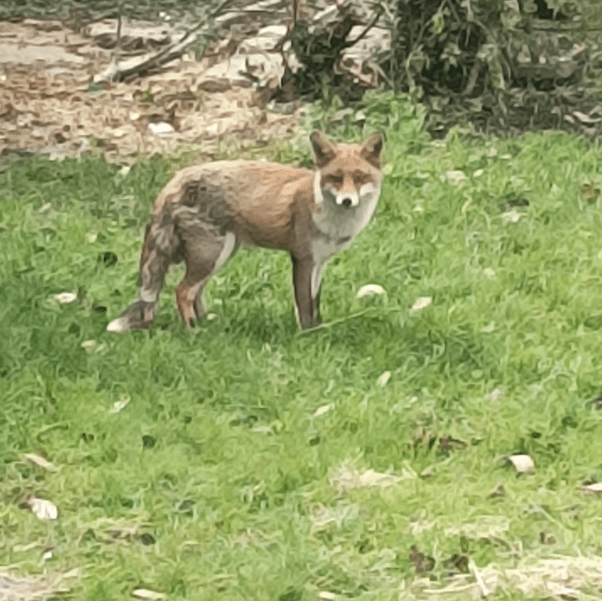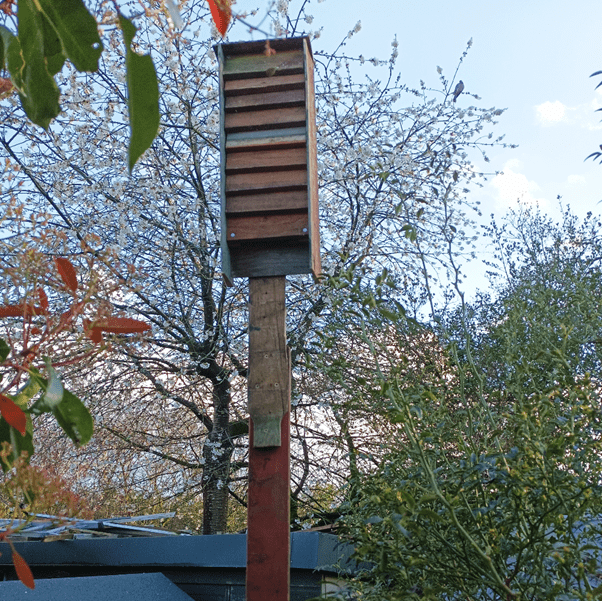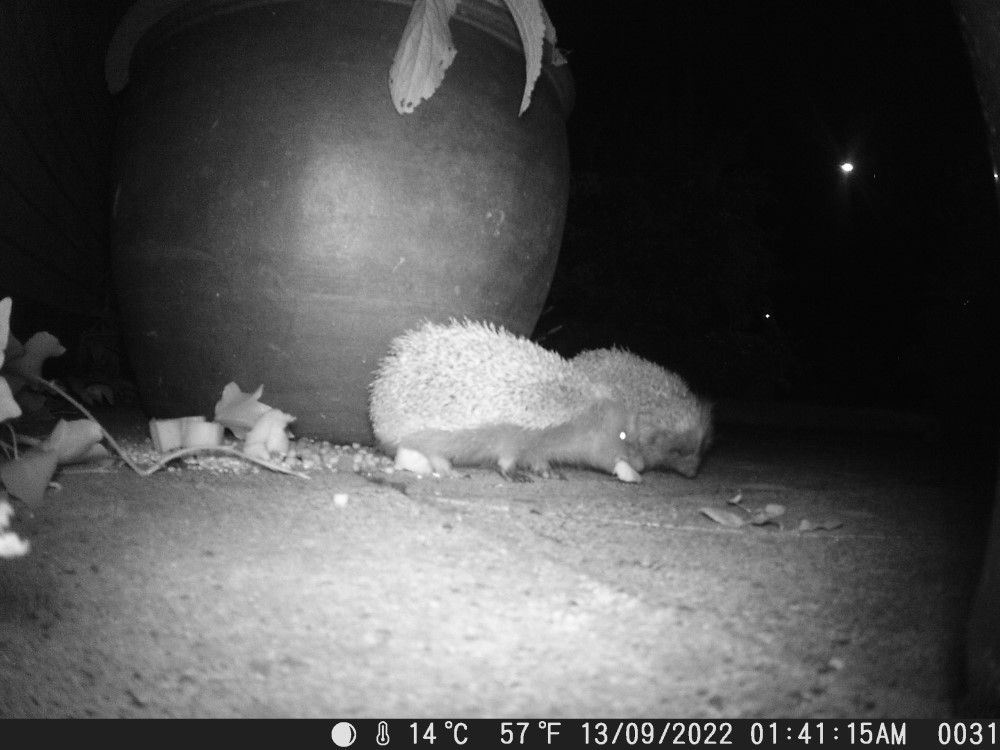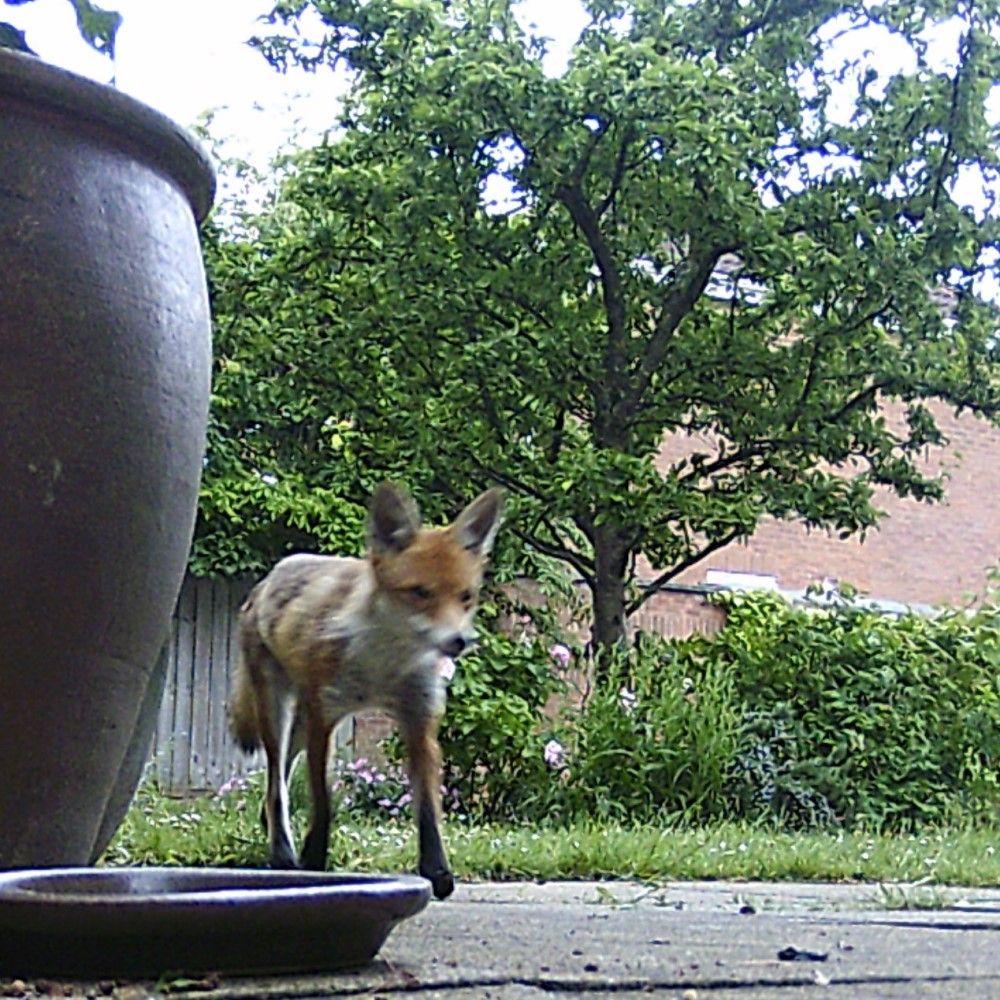Veronica and John‘s medium-sized suburban garden is about two miles outside a city in the north of England. ‘We read a lot about the importance of gardens as potential spaces for wildlife to flourish, so we decided to join the Living with Mammals survey. That was in 2006, and we’ve been going ever since.’
Fifteen-year-old Jasper lives in Kent with his family and two cats called Kushi and Kiki. He took part in Living with Mammals for the first time this year, working towards his Duke of Edinburgh Silver award. ‘During this time, I have seen more mammals in my garden than ever before, I think because it is the first time I have sat outside just with the purpose of seeing mammals.’
As citizen scientists, Jasper, and Veronica and John have increased our knowledge of how wild populations are changing – the first step in stopping the loss of biodiversity – but they give an insight, too, into what we can all learn from wildlife watching.


Jasper The first time, I saw a fox in my back garden at night, but then I just mostly saw my two cats and sometimes their friend too. Often, they would keep me company, which was perhaps not good for the mammal spotting, especially for spotting the smaller mammals.
Veronica and John Our house was built in 1995, on a residential estate with parkland, public buildings, and minor roads. The first step to learning about the wildlife was to explore and record the surrounding environment. There’s a pond on adjacent land with copses, semi natural grassland, flowerbeds, and seating. It’s a lovely place for children, joggers, and dog-walkers.
Life in a nutshell: micro-habitats
The garden has two areas of grass, pots for flowers, fruit and veg, flowerbeds, fruit trees, holly and other berry producing bushes and hedging. There are less tidy areas, too: piles of leaves, a stack of bricks, a small log pile, and other paraphernalia that provide a habitat for invertebrates etc.
Jasper A couple of years ago, I spotted a hedgehog in my garden and have bought a hedgehog house and put it in a sheltered spot in my front garden. Although we have a new fence, we have ensured there is a big enough hole in it for hedgehogs to get through both sides.
I really like bats and so decided to make a bat box and plant some evening primrose to attract night-flying insects, which they feed on. My dad helped me make and put it up at the end of my garden, near my neighbour’s pond and very high up to be safe from the cats. My neighbour saw it and told me that he has a bat detector and knew that pipistrelles visit his pond quite regularly . I don’t know if the bats have used the box yet as I put it up in a place where it’s impossible to see if there are any bat droppings, but I’ve seen bats fairly regularly this summer. It is the first time I have spotted them in my garden though this may be because I haven’t actively looked out for them before or really sat in my garden at dusk.
Comings and goings
We don’t get any squirrels in our back garden even though we have lots of trees. I think this may be because we are so near to the woods that they don’t need to come into our garden for food. There is a walnut tree across the road from our house which the squirrels love and now and then they’ll cross over to bury the nuts in my neighbours’ front garden. Both times I spotted a squirrel in my front garden they were on their way to do this.
Veronica and John Sightings of grey squirrels are increasing in our garden, but on one occasion, about ten years ago, we also saw a red squirrel.
We record mammal sightings and signs such as droppings, footprints (using a footprint tunnel), and bat calls. In previous years, we used to get wood mice in the garden much of the time, but now, possibly because we don’t feed the birds, sightings are rare. We frequently find little middens of cherry stones around the garden in autumn – maybe a sign of mice? To be investigated further… We rarely see rats in our garden, or spot signs of them.


We see hedgehogs and signs of them through the year, from spring to early December. We know from trail cameras that hedgehogs might visit more than once during the night. This could be one hedgehog visiting several times or several hedgehogs visiting in sequence. Sometimes two adults or an adult and young, visit together, especially during the breeding season.
Foxes are also often recorded on our cameras overnight, as they patrol. They’ll come for food that we put out and on one occasion, some time ago, we saw a fox pounce and catch a mouse in the flowerbed.
Jasper I’ve seen foxes in my back garden quite often. One would come from under the fence, down the path to the end of the garden. His route was stopped though when we replaced an old fence. We also had a new gate put up, which has stopped that short cut, too. At one point in spring, I kept seeing a smaller fox in my front drive. One time he was just lying in our driveway, looking very relaxed. He was not nervous of us at all. One day I spotted a fox in my garden during the day. He was very interested in my guinea pig, who was in his outside run at the time. It ran off when it saw us but came back twice more to watch my guinea pig.
I’ve really enjoyed taking part in the survey. I feel I am much more aware of the nature around me now and have learnt a lot. I am interested in finding out more about bats and getting involved in bat conservation in the future. I am also keen to get a photo of a bat. They have been too quick for me so far. I was walking in the woods in the evening recently and one swooped down so low over my head. I could see it in detail, but I was too surprised to photograph it.
Veronica and John We are proud to be collecting our mammal records for PTES and doing our bit for nature conservation. We love watching the antics of the mammals that visit our garden; how they adapt to and make the most of the habitat we offer. We find ourselves trying to make our garden more wildlife friendly, so that there’s more natural food available to the wildlife.
We find that doing the survey is great fun, very rewarding, and good for mental and physical health and wellbeing – especially during times like lockdown. It’s not demanding of time or effort, and it doesn’t impact on work, holidays, family visits or activities (like the football games!). The whole family is interested and enjoys being involved. Mammals are generally attractive to children, and we’re now coming to our third generation of little surveyors – helping to raise awareness among future generations.
Each of us connects in our own way to the world around us, but if we look upon it ‘with the purpose of seeing’, and recognise our wild neighbours, that connection can be beneficial for ourselves and conservation alike.
Huge thanks to Jasper and to Veronica and John for their support and sharing their experiences.
Get involved with our mammal watching surveys, Living with Mammals today or visit our mammal fact files to learn more about British mammals:
